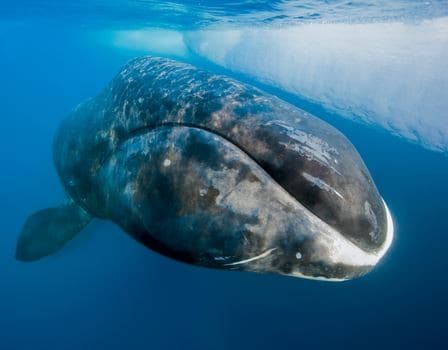The bowhead whale has a lifespan of more than 200 years, it is the longest-living mammal on earth. Scientists who studied the whale’s genetic patterns believe they have found the key genes associated with cancer resistance and DNA damage repair.
Nearly all mammals die before 100 years of age. More than 99% of humans die from heart disease, cancer, or simply old age before reaching the age of 100. Scientists have been trying for years to determine what it is about bowhead whales that allows them to live so long. These animals remain disease-free until a much more advanced age than humans.
Scientists in the UK and US have extensively mapped the bowhead whales’ genetic patterns. They now claim to have a much better understanding of what prolongs life and which genes are associated with longevity.
The bowhead whale (Balaena mysticetus), as far as we know, is the longest-living mammal on earth. One male was estimated to be 211 years old.
UK-based study leader, Dr. João Pedro de Magalhães, who works at the Functional and Comparative Genomics department at the Institute of Integrative Biology, part of the University of Liverpool in England, claims his discovery could eventually lead to genes being used to prolong human life.
Dr. Magalhães is currently seeking funding so that his team can carry out animal trials. The aim would be to insert genes into mice to see whether their resistance to developing disease might improve.
In an interview with the Sunday Times, Dr. Magalhães said:
“My ideal next experiment is to take a gene from the bowhead whale and put it in a mouse and see if that mouse will live longer and be protected against cancer. If they do what I expect them to do, then we could try to think of ways to employ the knowledge for [human] therapeutic purposes.”
Dr. Magalhães’ Personal Statement: “The goal of my work is to help understand the genetic, cellular, and molecular mechanisms of ageing. In the long term, I would like my work to help ameliorate age-related diseases and preserve health. No other biomedical field has so much potential to improve human health as research on the basic mechanisms of ageing.”
At the Genomics Senescence website, Dr. Magalhães explains that the aim is for the project to be a community effort. He invites anybody wishing to collaborate or help in this endeavor to contact them.
The project’s coordinator is Dr. Magalhães. Other collaborators include Craig George & Robert Suydam (North Slope Borough Department of Wildlife Management, USA), Jong Bhak (South Korea), Knud Larsen & Bo Thomsen (Aarhus, Denmark), John Bickham (Houston, USA), John Patton (Purdue University, USA), Gary Stuart (Indiana State University, USA), George Church (Boston, USA), and Jeremy Semeiks & Nick Grishin (Dallas, USA).
The longest-living land animal is believed to be an Aldabra giant tortoise that died in March 2006 at the age of about 250 years in Alipore Zoo, Kolkata, India. (Tortoises are reptiles).
Video – What is aging? Dr. Magalhães explains
In this animated overview of the biology of ageing, Dr. Magalhães explains the work done by the Integrative Genomics of Ageing Group at the University of Liverpool, UK.


